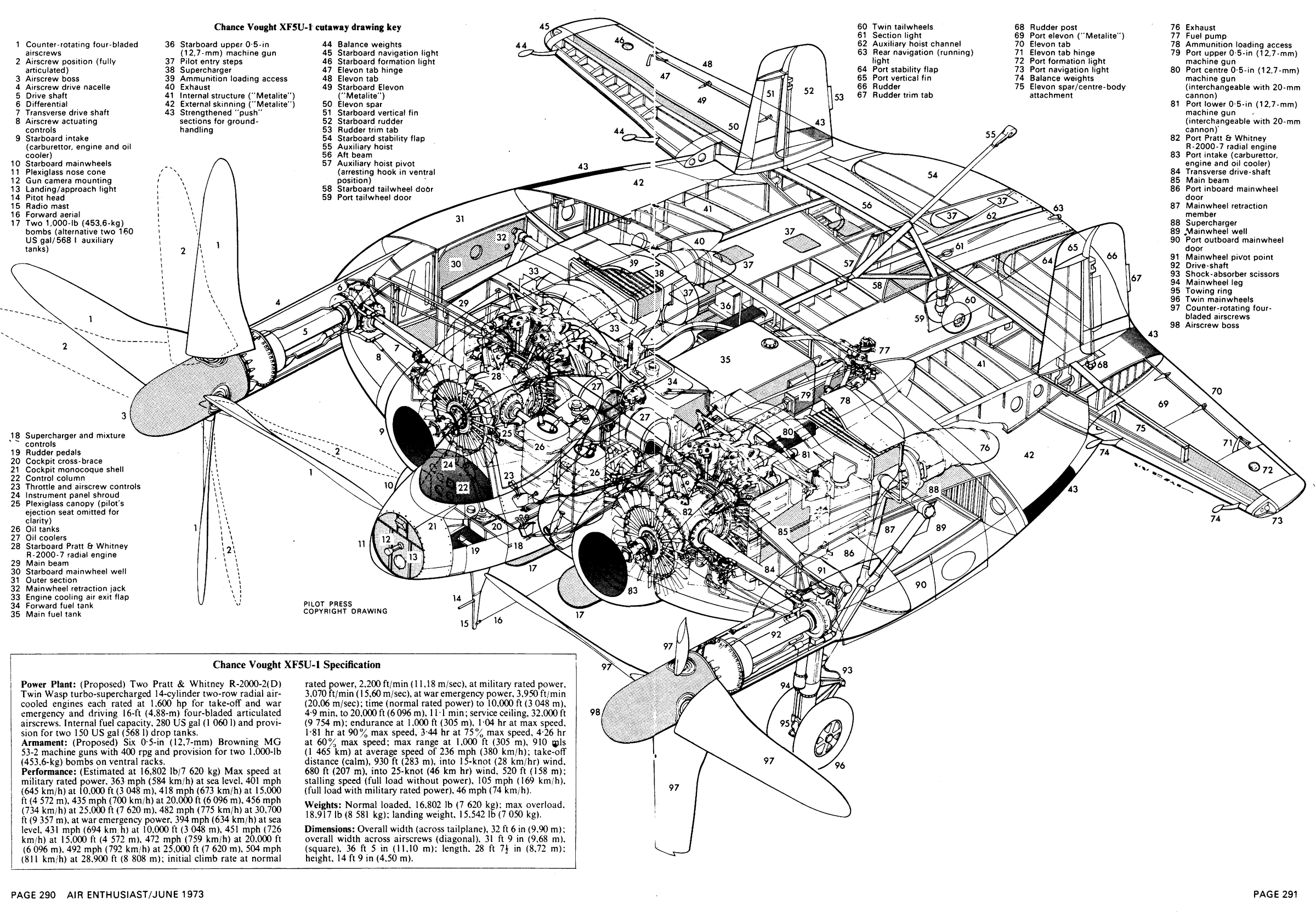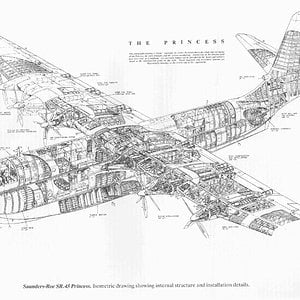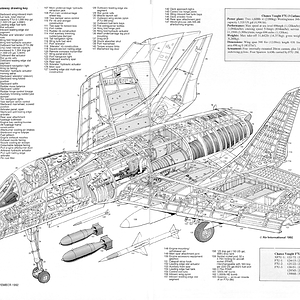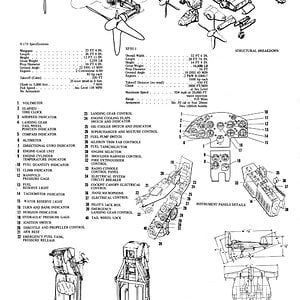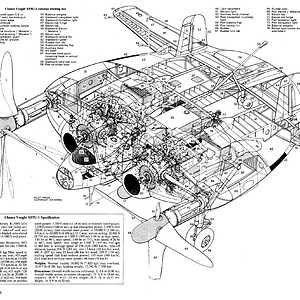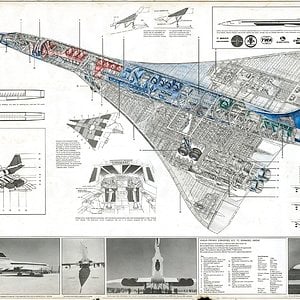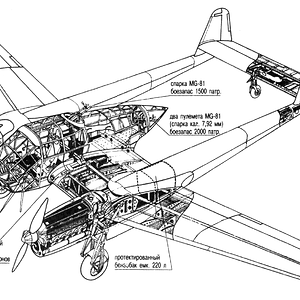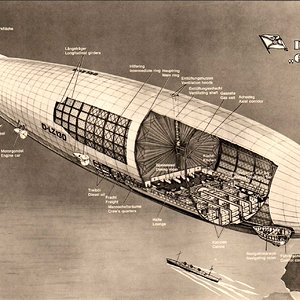Navigation
Install the app
How to install the app on iOS
Follow along with the video below to see how to install our site as a web app on your home screen.
Note: This feature may not be available in some browsers.
More options
You are using an out of date browser. It may not display this or other websites correctly.
You should upgrade or use an alternative browser.
You should upgrade or use an alternative browser.
Design and development
A developed version of the original V-173 prototype, the XF5U-1 was a larger aircraft. Of all-metal construction, it was almost five times heavier, with two 1,600 hp (1,193 kW) Pratt & Whitney R-2000 radial engines. The configuration was designed to create a low aspect ratio aircraft with low takeoff and landing speeds but high top speed.[2]
The XF5U looks like it should not be able to fly, as its wing area looks so small. Normally, a wing with such a low aspect ratio will suffer from very poor performance due to the degree of induced drag created at the wingtips, as the higher pressure air below spills around the wingtip to the lower-pressure region above. In a conventional aircraft, these wingtip vortices carry a lot of energy with them and hence create drag. The usual approach to reducing these vortices is to build a wing with a high aspect ratio, i.e. one that is long and narrow. However, such wings compromise the maneuverability and roll rate of the aircraft, or present a structural challenge in building them stiff enough. The XF5U overcomes the tip vortex problem using the propellers to actively cancel the drag-causing tip vortices.[3] The propellers are arranged to rotate in the opposite direction to the tip vortices, which retains the higher-pressure air below the wing. Since this source of drag is eliminated, the aircraft will fly with a much smaller wing area, and the small wing yields high maneuverability with greater structural strength.
The propellers envisioned for the completed fighter were to have a built-in cyclic movement like a helicopter's main rotor, with a very limited ability to tilt up and down to aid the aircraft in maneuvering. An ejection seat was fitted to allow the pilot to clear the massive propellers in the event of an in-flight emergency.[2] Although the prototype was unarmed, a combination of machine guns and cannons would have been installed under the nose.[2]
[edit] Testing and evaluation
The XF5U design was promising: specifications given at the time promised great maneuverability and speeds up to 550 mph (885 km/h),[4] however, it came at the time when the United States Navy was switching from propeller driven to jet propelled aircraft. By 1946, the XF5U-1 project was already long over its expected development time, and well over budget.[2] With jet aircraft coming into service the Navy finally canceled the project on 17 March 1947 and the prototype aircraft (V-173) was transferred to the Smithsonian Museum for display. Although two aircraft were constructed, a lone XF5U-1 underwent ground runs but never overcame vibration problems. Taxi trials at Vought's Connecticut factory culminated in short "hops" that were not true flights.[5][6] The only completed XF5U-1 proved to be so structurally solid that it had to be destroyed by a wrecking ball.[7]
[edit] Specifications (XF5U-1)
General characteristics
Crew: One, pilot
Length: 28 ft 7 in (8.73 m)
Wingspan: 32 ft 6 in (9.91 m)
Height: 14 ft 9 in (4.50 m)
Wing area: 475 ft² (44.2 m²)
Empty weight: 13,107 lb (5,958 kg)
Loaded weight: 16,722 lb (7,600 kg)
Max. takeoff weight: 18,772 lb (8,533 kg)
Powerplant: 2 × Pratt & Whitney R-2000-7 radial engine, 1,350 hp (1,007 kW each) each
Performance
Maximum speed: 413 knots / 475 mph at 28,000 ft (estimated)[8] (765 km/h at 8,534 meters)
Range: 1,064 miles (1,703 km)
Service ceiling: 34,492 ft (10,516 m)
Rate of climb: 3,000 ft/min (914 m/min)
Wing loading: 35 lb/ft² (172 kg/m²)
Power/mass: 0.16 hp/lb (0.27 kW/kg)
Armament
6 × .50 machine guns or 4 × 20 mm cannon
2 × 1000 lb. bombs
A developed version of the original V-173 prototype, the XF5U-1 was a larger aircraft. Of all-metal construction, it was almost five times heavier, with two 1,600 hp (1,193 kW) Pratt & Whitney R-2000 radial engines. The configuration was designed to create a low aspect ratio aircraft with low takeoff and landing speeds but high top speed.[2]
The XF5U looks like it should not be able to fly, as its wing area looks so small. Normally, a wing with such a low aspect ratio will suffer from very poor performance due to the degree of induced drag created at the wingtips, as the higher pressure air below spills around the wingtip to the lower-pressure region above. In a conventional aircraft, these wingtip vortices carry a lot of energy with them and hence create drag. The usual approach to reducing these vortices is to build a wing with a high aspect ratio, i.e. one that is long and narrow. However, such wings compromise the maneuverability and roll rate of the aircraft, or present a structural challenge in building them stiff enough. The XF5U overcomes the tip vortex problem using the propellers to actively cancel the drag-causing tip vortices.[3] The propellers are arranged to rotate in the opposite direction to the tip vortices, which retains the higher-pressure air below the wing. Since this source of drag is eliminated, the aircraft will fly with a much smaller wing area, and the small wing yields high maneuverability with greater structural strength.
The propellers envisioned for the completed fighter were to have a built-in cyclic movement like a helicopter's main rotor, with a very limited ability to tilt up and down to aid the aircraft in maneuvering. An ejection seat was fitted to allow the pilot to clear the massive propellers in the event of an in-flight emergency.[2] Although the prototype was unarmed, a combination of machine guns and cannons would have been installed under the nose.[2]
[edit] Testing and evaluation
The XF5U design was promising: specifications given at the time promised great maneuverability and speeds up to 550 mph (885 km/h),[4] however, it came at the time when the United States Navy was switching from propeller driven to jet propelled aircraft. By 1946, the XF5U-1 project was already long over its expected development time, and well over budget.[2] With jet aircraft coming into service the Navy finally canceled the project on 17 March 1947 and the prototype aircraft (V-173) was transferred to the Smithsonian Museum for display. Although two aircraft were constructed, a lone XF5U-1 underwent ground runs but never overcame vibration problems. Taxi trials at Vought's Connecticut factory culminated in short "hops" that were not true flights.[5][6] The only completed XF5U-1 proved to be so structurally solid that it had to be destroyed by a wrecking ball.[7]
[edit] Specifications (XF5U-1)
General characteristics
Crew: One, pilot
Length: 28 ft 7 in (8.73 m)
Wingspan: 32 ft 6 in (9.91 m)
Height: 14 ft 9 in (4.50 m)
Wing area: 475 ft² (44.2 m²)
Empty weight: 13,107 lb (5,958 kg)
Loaded weight: 16,722 lb (7,600 kg)
Max. takeoff weight: 18,772 lb (8,533 kg)
Powerplant: 2 × Pratt & Whitney R-2000-7 radial engine, 1,350 hp (1,007 kW each) each
Performance
Maximum speed: 413 knots / 475 mph at 28,000 ft (estimated)[8] (765 km/h at 8,534 meters)
Range: 1,064 miles (1,703 km)
Service ceiling: 34,492 ft (10,516 m)
Rate of climb: 3,000 ft/min (914 m/min)
Wing loading: 35 lb/ft² (172 kg/m²)
Power/mass: 0.16 hp/lb (0.27 kW/kg)
Armament
6 × .50 machine guns or 4 × 20 mm cannon
2 × 1000 lb. bombs

